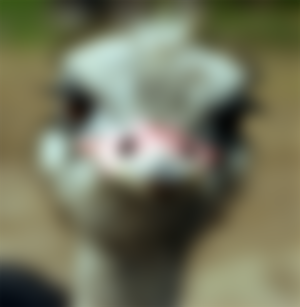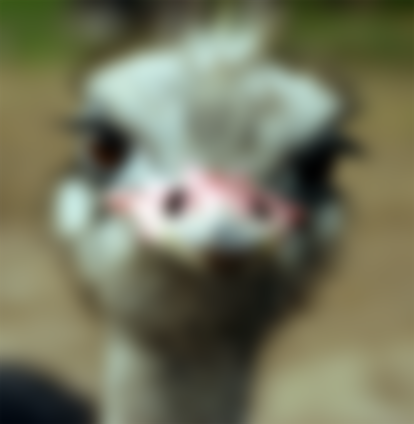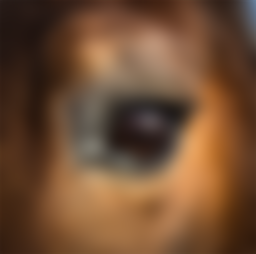It is a fact that the power of eyesight in a species is proportional to the size of the eye. Animals with extreme vision have large eyes. And we talk about absolute size, not relative (to the the general size of the animal).
Judging from this criterion and according to the current level of knowledge: which terrestrial animal, living or extinct, has or had the best vision in the animal kingdom? That is to say, which terrestrial animal had or has the largest eyes in absolute terms?

The answer is Tyrannosaurus Rex. (Image above: Skeleton of Tyrannosaurus Rex - Photo whitejillm/Pixabay; the image has been cropped and digitally edited; CC0/Public Domain.)
Perhaps this is surprising; the T. Rex of popular culture is sometimes described as half blind – as if it would not see a prospective prey if the latter was just not moving. The truth is that this beast probably had the best vision of all terrestrial animals that have ever existed. It also had binocular vision, which means that both eyes where directed forwards. But above all, its eyes were immense. If you look at a picture of a Tyrannosaurus Rex, the eyes won't look all that big, but that is because the whole animal is huge. In fact, its eyes are the largest ever in the terrestrial part of the animal kingdom – at least according to the present level of knowledge.
The word “terrestrial” (in this context meaning “living on land”) is important here because animals with bigger eyes exist in the oceans.
According the current level of knowledge, the largest eyes ever in the “animal kingdom” belong to the Giant Squid, Mesonychoteuthis hamiltoni.

(Image above: Ostrich – Photo skeeze/Pixabay; the image has been cropped and digitally edited; CC0/Public Domain.)
Of presently living terrestrial animals, the ostrich has the largest eyes; and of presently living terrestrial mammals, the horse has the largest. However, the horse is not the mammal with the largest eyes: there are aquatic mammals whose eyes are larger, namely seals and whales. Whales, however, appear to have relatively poor eyesight. Judging from that, it is unclear how far the relation between eye size and power of sight holds for a comparison between terrestrial and aquatic animals.
Perhaps it is surprising to find the horse as the terrestrial mammal with the largest eyes. So, one can ask, how well does a horse see? Is horse vision extraordinary?
It ought to be, but we don't really know. However, an interesting fact is that horses are both monocular and binocular, as they choose. This means that they can watch sideways, to different directions, almost around themselves - and they can focus both eyes forwards on the same object – although they can only watch binocularly along the nose. When they want to fix and object, they must lift their head and point in that direction with the nose.
Contrary to humans, they also have the ability to move the eyes independently. While we always move our eyes as a pair, they can move one in one direction and the other in another direction. This is quite useful when you try to look around you for possible dangers. However, these abilities have nothing to do with the direct power of their eyesight, although it can indicate that their vision is capable of handling different tasks. The binocular ability, for instance, indicates that they have a good perception of depth.
There are blind spots, however. The horse cannot see a rider on its back without turning its head. When it walks, it cannot see right in front of itself either. Its nose is pointing downwards and the binocular vision is following in that direction.

(Image: Eye of horse – Photo LunarSeaArt/Pixabay; the image has been cropped and digitally edited; CC0/Public Domain.)
Tests of horse's eyesight show that their vision is better than human vision and that they see well at a distance. They can distinguish smaller objects at distance than humans do. Tests also indicate that the night vision of horses is fairly good, but that they lack the ability to adjust the eyes to darkness swiftly. It takes some time.
Based on the presence in the eye of different light sensitive cells, we can conclude that horses are not colour blind but that they have limited ability to see colours. Tests of exactly which colours they can see have shown partly contradictory results.
Copyright © 2019, 2021 Meleonymica/Mictorrani. All Rights Reserved.
(Lead image: Ostrich by ABA63/Pixabay; the image has been cropped and digitally edited; CC0/Public Domain.)
Here you can find my articles about Eyes, Light, Vision & Blindness, Natural History, and Health & Medicine.
Interested in nature & natural science, join my community Natural Science (1c4e)
You find all my writings on Read.Cash, sorted by topic, here.


